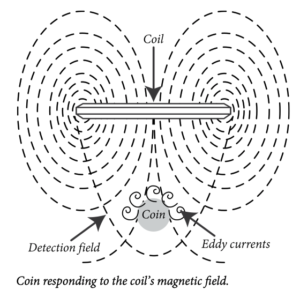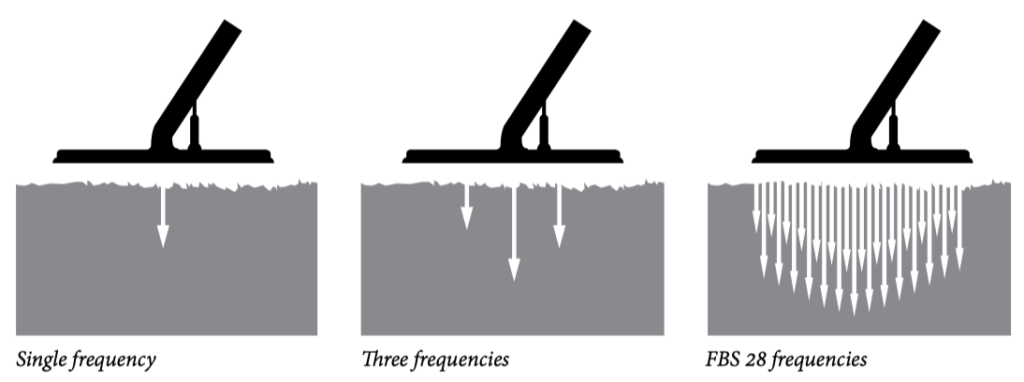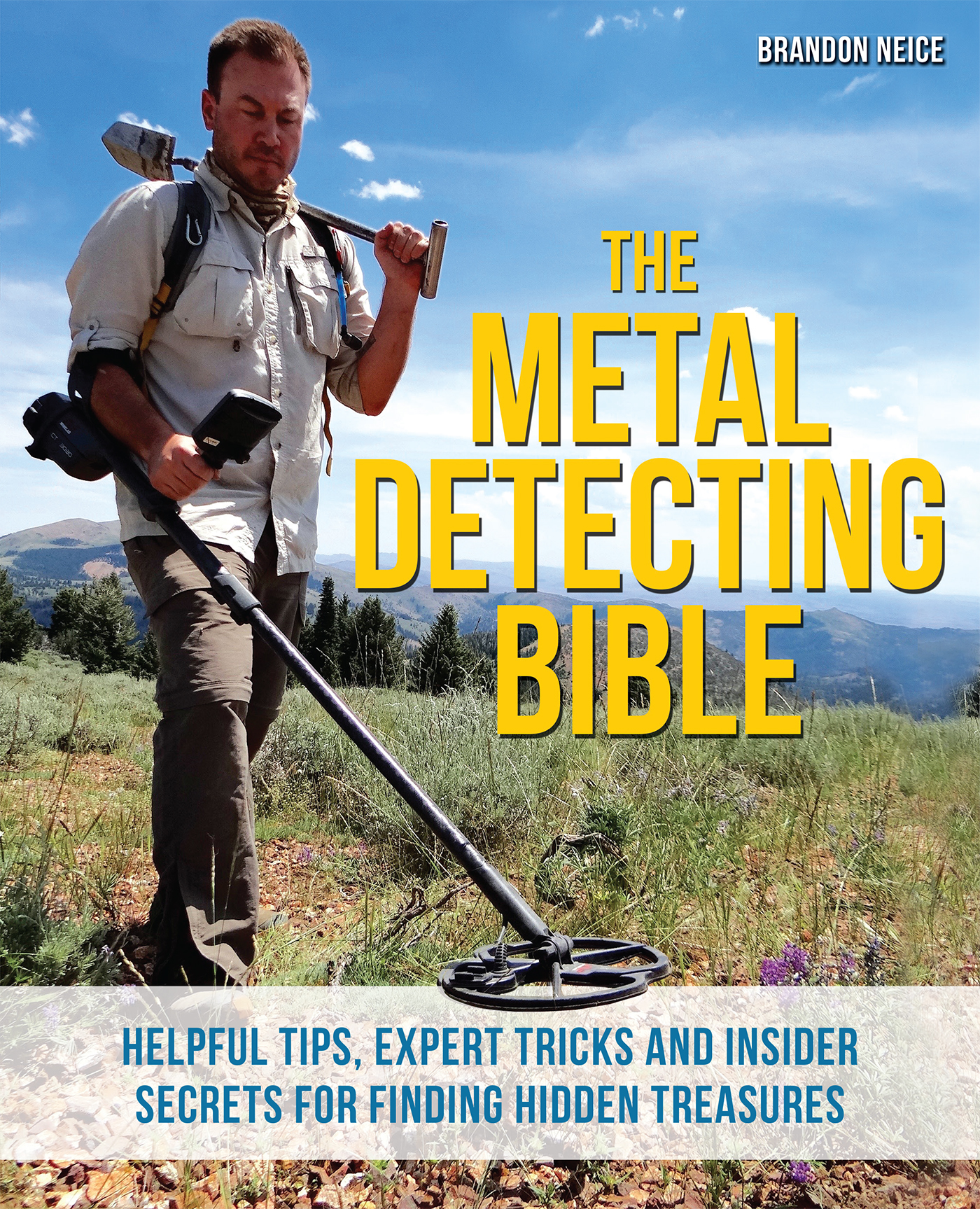
Metal Detecting Tips and Tricks for Beginners
- Book Sample /
- Hobbies
Getting Started with Metal Detecting
This article was adapted from the book The Metal Detecting Bible by Brandon Neice
Since the hobby of metal detection was created, untold billions of dollars’ worth of gold, silver, coins, jewelry, antiques, war relics, meteorites, and more have been found using metal detectors. Most importantly, we have rescued items that would have been lost to the sands of time. Some of the artifacts that have been recovered by hobbyist metal detectorists have literally written and rewritten history books while others now grace the shelves of the Louvre.

Basic Metal Detector Designs
To start off, I have to address some basic functions and principles. This introduction will get some technicalities out of the way so you can go metal detecting! I’ll try to make this as painless as possible. I’m not an engineer, so I’ll speak in terms we can all relate to.
The basic design of a metal detector consists of a control box with a few buttons and/or knobs, a coil (the roundish thing that you place next to the ground), and a shaft that allows you to swing the detector in a fashion that is conducive to finding, well, metal. There are several different types of metal detectors. The most common by far is what we refer to as a VLF (very low frequency) machine. Metal detection machines also include pulse induction (PI), zero voltage transmission (ZVT), full band spectrum (FBS), and other types of multi-frequency machines. For the sake of moving forward, I won’t be discussing some of the older, more antiquated technologies.
VLF Detectors
VLF detectors operate on a very primitive principle using magnetic fields. Here’s how:
- The metal detector’s control box produces an electrical current that is transmitted via the transmit portion of the coil.
- Once the current leaves the coil, it becomes a magnetic field. The size and shape of the detection field varies depending on the size and type of coil, the frequency, and environmental factors, such as ground conditions.
- The magnetic field generated by the transmit portion of the coil oscillates at varied frequencies.
- When a metal object is introduced into the detection field, electrical currents begin to flow through the metal object. These are called eddy currents. Eddy currents generate a magnetic field of their own.
- The magnetic field created by the metal object is different in size and strength from that of the magnetic field produced by the transmit coil. Ultimately, it’s the altered and quickly decaying magnetic field of the eddy currents that is detected.

The metal detector’s transmit frequency plays a large role in how metal targets respond. As a rule of thumb, the lower the frequency, the farther and deeper the signal will travel. However, lower frequencies do not respond well on small targets and low conductors. On the opposite end of the spectrum, higher frequencies are more sensitive to small items and low conductors.
When referring to the conduction properties of a metallic object as it pertains to metal detecting, the term “conduction” refers to how the metallic object facilitates eddy currents. There is a direct correlation between an object’s ability to conduct electricity and an object’s ability to facilitate eddy currents: The better the metallic object conducts electricity, the better the object will facilitate eddy currents. The better an object facilitates eddy currents, the more likely it is to be a “high conductor,” such as silver or copper, thus generating a “high tone.”
The opposite can be said of “low conductors,” such as iron and lead.
Let’s break it down.
1 . Your metal detector processes the size of the target, how well it conducts eddy currents, the orientation of the target, the distance of the target in relation the coil, ground mineralization, electromagnetic interference (EMI), and the presence of other metallic objects in close proximity of the target.
2 . When a metallic object interferes with the magnetic field, the receiving portion of the coil detects eddy currents. Those signals are amplified and processed by the control unit.
3 . The control unit interprets the received information and assigns the appropriate audible response for the target. The end result is a beep, letting you know that there’s something metal under your coil.
4 . Most metal detectors rely on motion to work and will only detect an object if the coil is moving.
Hovering over a target will not produce a sound, unless the detector is in pinpoint mode (page 26), so keep that coil swinging!
Looking to Get Started with VLF Metal Detecting?
Here are our top recommendations for VLF Metal Detectors to get you started. The Bounty Hunter TK4 Tracker IV Metal Detector is a great entry-level VLF detector, it’s easy to use and very budget-friendly. If you’re looking for a bit more punch (into the earth) try the Fisher F22 Weatherproof Metal Detector with Submersible Search Coil it’s a bit pricier but one of the best VLF detectors for beginners.
Pulse Induction (PI) Detectors
PI machines operate by sending and receiving pulses of varying frequencies into the ground. Adjusting the pulse timing and delay settings will determine their depth and/or sensitivity. Here’s a quick summary of how they work:
- The machine sends out pulses consisting of high currents transmitted in timed intervals through the coil.
- Once the transmit frequency has left the coil, the machine switches into receiving mode and waits to receive a returning sample of the transmitted signal.
- Signals are generated when current begins to flow into the metallic object as a result of the magnetic field produced by the coil.
- When the machine switches into receiving mode, the magnetic field produced by the coil collapses and shortly after, the current in the metallic object collapses. It’s this secondary collapse caused by the metallic object that is detected.
PI machines are generally not going to be your first choice for coin hunting because they lack the ability to discriminate and are considered an all-metal machine. They can be effective at relic hunting in areas of low to moderate trash and have become a popular alternative for relic hunting in the Civil War sites of the South. They are typically used for gold prospecting in the highly mineralized soils of gold-bearing areas; however, they are also great at beach hunting because they aren’t as susceptible to high concentrations of minerals and the salinity of beach environments. The vast majority, however, are geared toward gold prospecting.
Because these machines are a highly specialized tool primarily used for gold prospecting, we won’t be getting too in depth about them. What do you need to know? If you get one for coin hunting, plan on digging more trash than coins. If you plan on getting one for relic hunting, plan on going to a site with very few targets or highly mineralized ground where other detectors won’t work. If you want one for beach hunting, make sure it’s waterproof and bring a BIG sand scoop because they can detect quite deep. I use them almost exclusively for nugget hunting and am always impressed at their ability to hit gold nuggets at depth.
Looking to Get Started with Hunting for GOLD?
Here are our top recommendations for PI Metal Detectors to get you started. The Fisher Gold Bug Metal Detector is a super light-weight, lower-cost option for getting started hunting for even the smallest gold pieces. The Minelab Equinox 600 Multi-IQ Metal Detector is simply, hands down, one of the best detectors you can get on a medium budget for gold prospecting.
Full Band Spectrum (FBS) Detectors
Full band spectrum detectors operate on multiple frequencies at the same time. The ability to send and receive multiple frequencies at once is almost like having several detectors in one. FBS technology also allows the detector to process both ferrous and non-ferrous properties of the target simultaneously. This provides the user with more accurate information on the target and allows for more accurate discrimination of the target. We talked about how the lower frequencies tend to get more depth and respond better to high conductors and that the higher frequencies tend to hit harder on smaller, low conductors near the surface. Now imagine that your detector can use a range of frequencies to cover all the bases!
The advantage that these multi-frequencies have can be quite substantial. The only down side is that typically you’ll have to swing a little slower with a multi-frequency detector. This is simply because the detector has so much more information to process. The new FBS detectors have greatly improved recovery speeds in comparison to only a few years ago and although they still aren’t as fast as a single-frequency machine, they aren’t far behind. Some newer detectors even allow the user to choose what frequencies to operate on. This can be beneficial in areas of high trash where recovery speed is important.

Zero Voltage Transmission (ZVT) Detectors
ZVT detectors are similar to PI detectors in that they are both highly specialized machines used primarily for detecting for gold nuggets (nugget shooting) in highly mineralized areas. Unlike PI machines, ZVT machines constantly send signals into the ground and constantly receive signals from the ground. As I’ve stated before, I’m not an engineer but what I do know is that by not pausing to send or receive signals, the ZVT machines have both increased depth and sensitivity.
Compare this to filming a fired bullet at different frame rates. Filming at 1,000 frames per second (almost constant) allows you to capture more detailed images and translates to a better, smoother video playback than filming at 30 frames per second. During slow-motion playback, 1,000 frames per second will allow you to view a speeding bullet rotating through the air; 30 frames per second would fail to capture the bullet entirely.
Now, picture that bullet as a gold nugget. The 1,000-frames-per-second camera is the ZVT detector and the 30-frames-per-second camera is a PI machine. Some tests suggest that ZVT detectors gained a 50 percent increase in depth on gold nuggets when compared to PI machines in the same ground conditions using the same targets.
Looking to Get Started with ZVT detecting?
In a lot of ways, ZVT is the future of gold hunting and offers you a highly tuned way to detect nuggets in areas where salt and minerals make detecting very difficult. There is no real entry-level with ZVT detecting, so this is really for enthusiasts who are looking to take metal detecting to the next level. With that being said, the Minelab GPZ 7000 is a great option.
Ready to read more about getting started with metal detecting? Check out The Metal Detecting Bible
Ulysses Press has affiliate partnerships and links found on our website may be affiliate links. If you buy something by clicking through our links, we may earn an affiliate commission.
The Metal Detecting Bible
The ultimate A-to-Z guide revealing everything you need to know to become a metal detecting expert Who wouldn’t get a thrill from discovering buried treasure? Now with this in-depth guide, you can learn the secrets to finding valuable items like coins, jewelry and historical relics with a metal detector. With tips on choosing the ideal
Learn more







